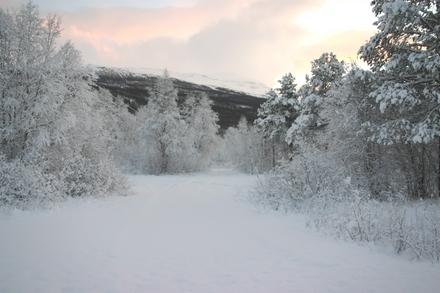By Penny Paugh
Over half of the Arctic is covered by forest. Snow blanketing over a forest actually keeps the soil at a fairly high temperature. Most climate models do not account for the size of forestry in that area, but some are models are now beginning to account for this variable.
Climate modeler Isabelle Gouttevin of the CNRS/University Joseph Fourier-Grenoble in France is finding that accounting for the size of forestry in the Arctic can make a significant difference in modeled climate projections.
“At a depth of 50 centimeters, soil in wintry taiga can be 12 degrees Celsius warmer than computer simulations predict when all snow-covered Arctic terrain is treated like tundra,” researchers concluded in the June 2 Journal of Geophysical Research.
The study found several facts:
- Insulation provided by forests decreases the amount of carbon that Arctic soils can hold by some 64 billion metric tons
- Associated soil warming could annually increase the activity of microbes that release carbon-based greenhouses gases into the atmosphere by 22 percent.
- Decomposition of soil organic matter (which produces greenhouse gas) and permafrost thawing would be significantly greater at the global scale.
But all is not lost. A phenomenon recently noticed by scientists due to warming in the region is a burst of phytoplankton. During photosynthesis phytoplankton remove carbon dioxide from sea water and release oxygen as a by-product. This allows the oceans to absorb additional carbon dioxide from the atmosphere.
References
Raloff, J. (June 6, 2012) “Arctic’s wintry blanket can be warming: Forest snows Keep Northern Soils Relatively Toasty, Diminishing How Much Climate-Warming Carbon They Can Sequester,” Science News, retrieved from: http://www.sciencenews.org/view/generic/id/341306/title/Arctics_wintry_blanket_can_be_warming
“How Do Phytoplankton Control the Carbon Cycle?: The Carbon Absorbing Oceans, Earth Science Enterprise by NASA, retrieved from http://kids.earth.nasa.gov/seawifs/carbon2.htm
Gramling, C. (June 8, 2012) “Climate Change Boosts under Ice Life,” Science, Stuff.co.nz, retrieved from http://www.stuff.co.nz/science/7065600/Climate-change-boosts-under-ice-life


Comments are closed.